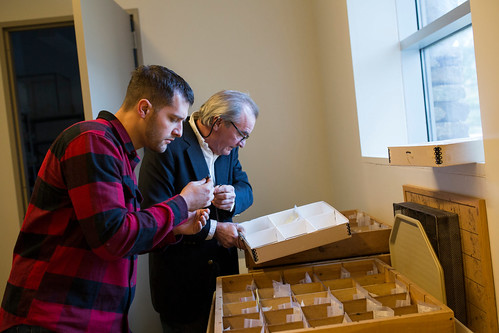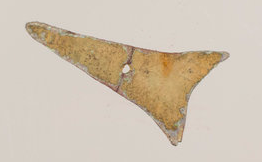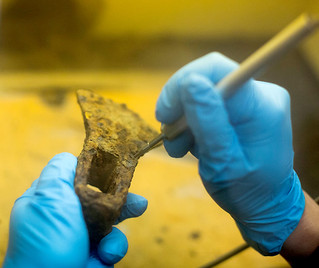
PREV ARTICLE
NEXT ARTICLE
FULL ISSUE
PREV FULL ISSUE
METAL DETECTORISTS AND ARCHAEOLOGISTS
A New York Times article published earlier this year examines the testy relations between metal detectorists and archaeologists, and highlights an example of a good working relationship that could be a model for the future. No coins were mentioned in the piece, but it illustrates theme we've discussed before. Here's an excerpt.
-Editor
In September, Mr. Wille drove from his home here to the Mashantucket Pequot Museum and Research Center with several boxes of objects — the highlights of his recent collecting. The museum — a vast, glassy structure that looks like an airport terminal, complete with a 185-foot-tall traffic-control-style tower — is a testament to the years when the Foxwoods Resort Casino made the Pequots the wealthiest tribe in the nation. Although those fortunes have declined, the Pequots are still financing projects by the archaeologist Kevin McBride, who works full time on what Lori A. Potter, a spokeswoman for the Mashantucket Pequot Nation, called “history that's written by the conquered and not by the conqueror.” Inside the museum, Mr. Wille unpacked his boxes, displaying items discovered around the Pequots' homeland: George Washington inaugural buttons, musket and cannon balls, a gold ring, commemorative spoons, a 100-year-old military insignia and the triangle of brass.

Keith Wille with the archaeologist Kevin McBride Dr. McBride, the museum's director of research, and David J. Naumec, its senior historian, inspected the lot, but were most curious about the crude brass triangle. They knew it was a kettle point, an arrowhead fashioned from a piece of a brass trade kettle (which resembles a pail) — an archaeological signature of the 17th century. The two scientists were finishing a seven-year project documenting the Pequot War of 1637, especially the running battle the English fought as they retreated to their ship, after massacring the Pequots at Mistick Fort. Many archaeologists consider metal detectorists looters who shouldn't be allowed anywhere near their labs or dig sites, but Dr. McBride has a different view. “It's a real ongoing debate in the profession,” he said. “To what extent do we embrace hobbyists or amateurs? You're not going to stop them so … join them.”
The scientists then reached out to local metal detecting clubs and formed an unconventional alliance with several detectorists, deputizing a few citizen-scientists who already spend free time looking for what archaeologists want. With so many significant Pequot war-era sites still undiscovered, the relationship has begun to produce results. Mr. Wille may have discovered “the first forced resettlement” of a native people, Dr. McBride said. The site predates Mashantucket, the first Native American reservation that was established in 1666, where the Pequot museum now sits. If this spot had not been found until now, and it took a metal detectorist to find it, Mr. Wille asked: Would it sway the negative opinion that other archaeologists have of metal detectorists? “No,” Dr. McBride said, but added: “We've done modeling. You can dig forever and not find the stuff you found in, what, a couple of hours?” “I found the kettle point the first time I was here,” Mr. Wille said. “I probably spent two hours.” Dr. McBride says there is a “better than even” chance that Mr. Wille discovered the site of Tatuppequauog, one of the villages mentioned in the 1638 letter. The letter said it had 20 houses; Dr. McBride estimated that about 200 people might have lived there, a large enough village to account for the distance between where the adze and kettle point were found. If it is Tatuppequauog, Mr. Wille would be listed as the discoverer. While he displayed little emotion that afternoon during the search, afterward he was ecstatic that his pasttime might contribute to history. “You become a part of something bigger than filling your cabinet with musket balls and belt buckles,” he said.
To read the complete article, see:
THE BOOK BAZARREWayne Homren, Editor The Numismatic Bibliomania Society is a non-profit organization promoting numismatic literature. See our web site at coinbooks.org. To submit items for publication in The E-Sylum, write to the Editor at this address: whomren@gmail.com To subscribe go to: https://my.binhost.com/lists/listinfo/esylum All Rights Reserved. NBS Home Page Contact the NBS webmaster 
|

